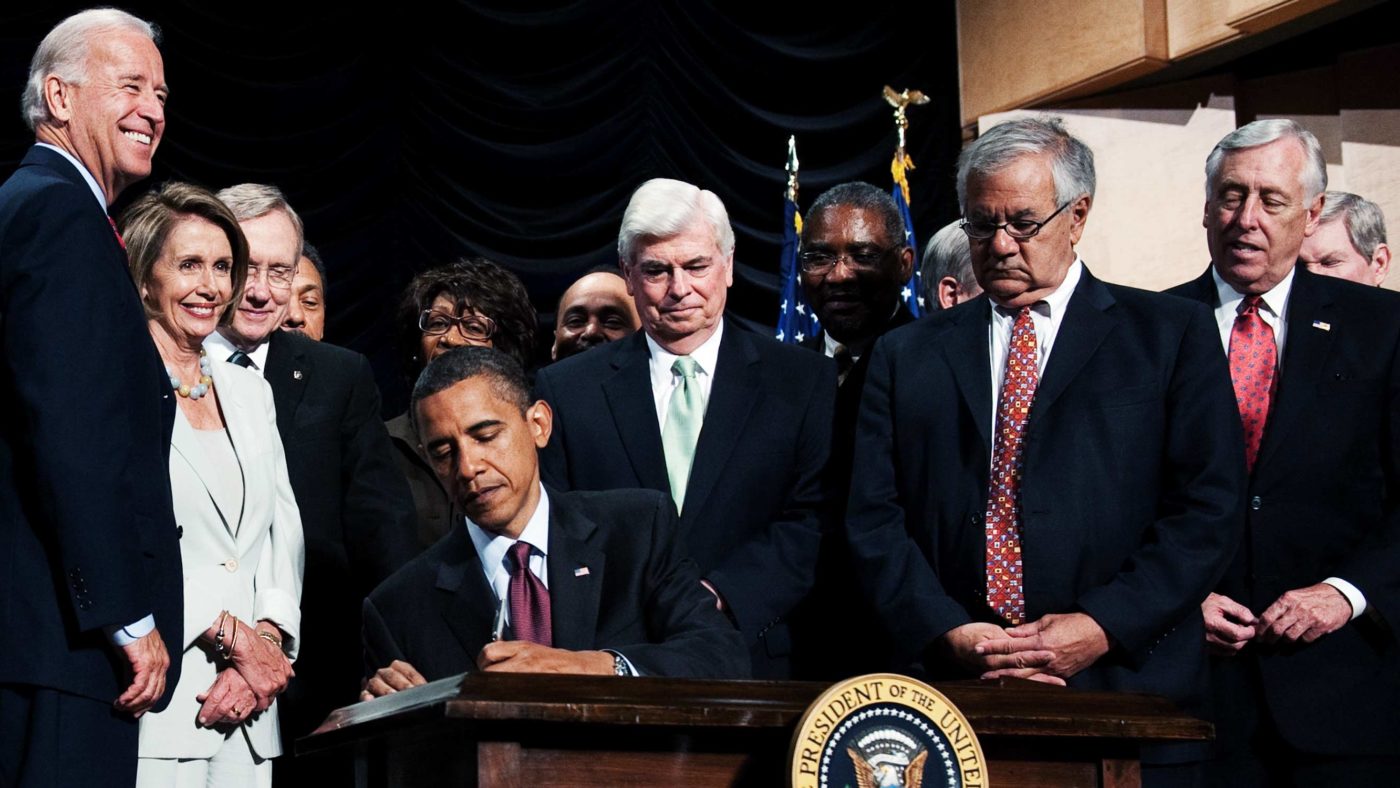If legislation were judged on length and complexity then the Dodd-Frank Act, passed in the wake of the last financial crisis, would constitute an unambiguous triumph.
Alas, the correlation tends to run in the opposite direction. The US Bill of Rights, that most influential and long-standing of modern constitutional documents, fits within a page of A4. The post-2008 financial law, by contrast, is 849 pages long and estimated to have introduced 27,278 new regulatory restrictions.
Just eight years after its passage, Dodd-Frank is unravelling. Gone are the days when the Democrats held the White House and both chambers of Congress — and when, buttressed by public ire following the 2008 bailouts, they were able to pass the most sweeping piece of financial legislation since the Great Depression. President Obama then proclaimed confidently that “this reform will help foster innovation, not hamper it… unless your business model depends on cutting corners or bilking your customers, you’ve got nothing to fear from reform.”
But Dodd-Frank did much more than attempt to curtail bad practices. It eliminated previous regulatory agencies and added a slew of new ones. It established a fresh regime for banks deemed of systemic importance. The law also altered mortgage lending rules, seeking to better reflect the risk of these loans on bank balance sheets. It introduced new regulations on consumer lending, including a cap on debit card fees. It mandated the registration of hedge funds and required added disclosures for traded securities.
Dodd-Frank was a technocrat’s dream in its breadth and scope. No crisis-era stone was left unturned, and a great many other future contingencies were addressed.
But the results have been disappointing. A decade after the downturn began, America’s biggest financial institutions are larger than ever, accounting for 44 per cent of all bank assets. Dodd-Frank, in fact, seems to have accelerated the decline of small U.S. banks by indiscriminately piling new regulatory restrictions on them. Bank entry, in particular, has ground to a halt, with new bank charters falling from 100 a year pre-crisis to only six in the entire post-crash period. In the meantime, 1,917 incumbent banks have disappeared as a result of merger or failure.
High market concentration, on its own, is neither good nor bad. Bigger banks are better able to diversify and take advantage of scale economies. Moreover, there is reason to believe that America has historically had too many, not too few, banks as a result of state-level restrictions on branching. The above figures, on their own, are thus insufficient to determine whether recent trends have been beneficent or deleterious.
But other evidence suggests that Dodd-Frank has had adverse consequences. Banks, especially small ones, report having discontinued key consumer offerings such as residential mortgages and home equity credit. Technology-enabled lenders have emerged to meet the gap, but only done so partly. Small business credit, half of which is accounted for by the community banks, remains below pre-crisis levels. Worryingly, the evidence suggests that the decline in business lending had a negative and persistent impact on local employment and wages in US counties.
Finally, the rate of unbanked and underbanked households rose in the wake of the crash and has only sluggishly fallen recently. Some 7 per cent of American households presently lack even one bank account, while another 20 per cent rely on (often higher-cost) alternative financial services providers. Unsurprisingly, they cite a too-low average account balance, high fees and a paucity of desirable products as reasons for not banking more.
Dodd-Frank is increasingly viewed as an obstacle to, rather than an enabler of, financial well-being and economic growth. Even Barney Frank, the Democrat who co-sponsored the law, has publicly stated that the $50 billion threshold above which financial institutions are deemed systemically important is too low. Indeed, efforts in Congress to lighten the regulatory burden bit by bit have so far been a matter of bipartisan agreement. Only anti-finance firebrands such as Elizabeth Warren remain fiercely opposed to change.
Warren’s name is indelibly linked to the Consumer Financial Protection Bureau, arguably the most aggressive of all Obama-era financial regulators. But even at the CFPB, winds of change are blowing. Under Warren’s disciple Richard Cordray, the Bureau viewed itself as punisher of financial providers. His Trump-appointed replacement, by contrast, has promised “humility and prudence,” and a greater emphasis on cost-benefit analysis. “If a company closes its doors under the weight of [regulation], we still have jobs at CFPB. But what about the workers who are laid off as a result?”
The conventional wisdom, in America as elsewhere, is that pre-2008 financial institutions operated in an unregulated Wild West where consumers were routinely fleeced. In fact, finance has been one of America’s most heavily regimented sectors since at least the 1930s. But regulation has often put financial products outside the reach of many households, without the promised benefits of greater safety and soundness. The change of approach touted by the Trump administration is long overdue — let’s hope that it materialises.


